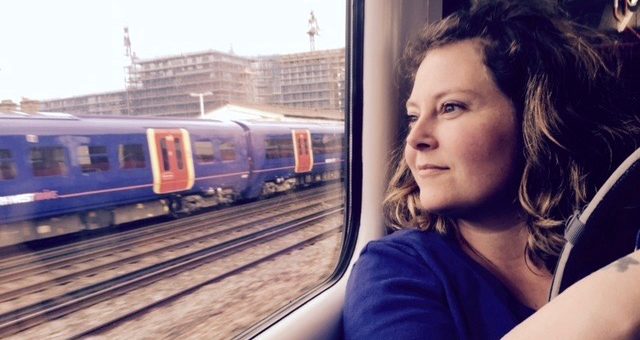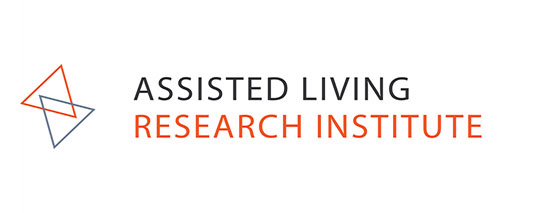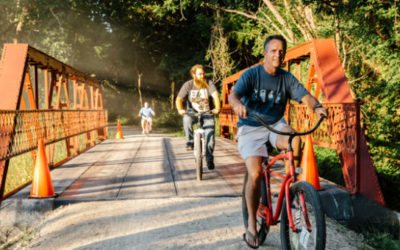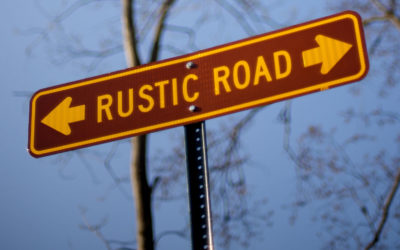Before my current job as an Americorps volunteer serving on the Western Slope of the Colorado Rockies, I had never heard of ‘socially engaged art,’ nor lived in a town so small as where I find myself today. The town of Paonia, Colorado, is home to 1,500 residents, in a valley with several thousand more. The place is incredibly picturesque; a high desert floor, surrounded by mountains, where I can ride my bike for 10 minutes to check in with the renewable energy innovators at Solar Energy International, or to visit baby goats at Western Culture Farmstead. Ranchers, orchardists, marijuana growers, artists and rugged sportsman all make their homes here, and today Paonia is home to a changing cultural landscape, as it has been ‘discovered’ as a spot with little regulation, a mild climate, abundant recreation, and a healthy arts district.

PC: Liza Eller
Because most Americorps members serve in places that are not ‘home,’ they are expected to be good ambassadors and mindful of the cultural differences in the places where they have landed. My focus is here is community and economic development through creative industries, at Elsewhere Studios, —an artist-in-residence program.
Part of what I do here is gather and organize information so that our outreach and grant-seeking activities go farther. I grow partnerships with other area not-for-profits to offer community classes, and highlight the creative endeavors of area craftsman, food producers, and conservation efforts. Along with those duties, I am also managing a summer (2018) project called INSPIRED: Art at Work —which is designed to advance area dialogue and help shift some of the polarization in our community as we consider our future together.
‘INSPIRED: Art at Work’ is hosting two visiting artists along with two local artists who are working closely with scientists, policy-makers, and five local partner organizations, (Citizens for a Healthy Community, Western Slope Conservation Center, Farm and Food Alliance, Solar Energy International, and North Fork Valley Creative Coalition) on community centered projects. Artists will create socially-engaged works that explore and address selected environmental, cultural, social, and economic issues vital to preserving the natural world, the quality of life, and the sense of place in the North Fork Valley.
Through a series of meetings and discussions, the artists and community members will define a particular issue or set of issues that relate to the health of our community. These might include matters such as the impact of energy development, Gunnison River health, air quality, changing energy resources, the loss of coal mining jobs, or changing cultural norms. The project is designed to promote dialog among the diverse inhabitants of our community. Throughout the two months of artist residency, local citizens will have multiple opportunities to participate in the project. Bridging artistic disciplines and activism, the artists will help us tell our stories and the artworks will be used as catalysts for significant exchange of ideas, values, and future dreams. In the artistic process of making or performing—barriers often disintegrate and friends are made while working together.
It’s a great mission, one that the idealist in me loves, and one that the pragmatist in me responds to with, “How?” It’s a personal and universal challenge to articulate and facilitate the ways in which the arts and the issues might dance together.
The buzzwords of 2017 crowd around me in my work: resilience,” “intimacy,” “engagement,” and “values,” all emerge, and I am continually mining for what they mean to me personally so that as we use them in the project I can hone in on one more—“authenticity.” Whatever stereotypes exist about rural people, they can smell a bullshitter from a mile away. And, as someone who deeply desires to walk my talk, it makes for a fruitful tension to try to get behind the skepticism, suspicion, and ‘newbie-ness’, to design an arts-centered program that might shift some perspectives within our rural discourse.

Paonia Sky PC: Liza Eller
Over 40 artist applicants, ranging from blue-collar artists —hailing from Appalachia and far Northern Michigan— to graduates of Harvard and Yale, submitted work for consideration, eager and ready to work with the community here. Our jury panel watched, read, and weighed in on all of them. These are artists who, as they produce beautiful works of art, are simultaneously striving to use their disciplines to address real-world challenges. Some have traveled all around the world, creating narratives in photography, oral histories, and writings, while others have remained committed to their place of origin, using murals and mapping, or textiles and sculpture, as mediums for navigating complex ideas related to our human relationships with each other and the world around us.
Socially engaged artists are not looking for pat answers. They are working to fold ideas and conversations into multifaceted works of art that challenge us to consider new ways of seeing. They are exploring new terrain through their creations and partnering with researchers and scientists to evoke empathy in our conversations around history, people, industry, land, class, and contested desires. INSPIRED is opening on the tails of BLM opening 20,000 acres of land upland in the watershed to new oil and gas leases, making for a special poignancy.
The questions posed by socially engaged art work stand for themselves and are some of the leading inquiries worldwide as we look into a post-industrialization world. “How can art encourage us to understand each other’s values?” “In what ways can art help us to understand how we protect what we hold dear?” “When we feel vulnerable about our choices, or the choices of our leadership, can art help keep a conversation going?” “Can the act of collective creation help build more solidarity in the shaping of our towns?”
The North Fork Valley economy has a legacy in coal, and the jobs here have been boom, bust, and boom again, until about 7 years ago when many of the local coal mines closed. For several generations, this beautiful place has flourished with ranches, orchards, and farms, and also by income from the mines. As this extractve economy has shifted however, so too has the local culture. A new influx of younger professionals and families have been finding their way to Paonia, less interested in the jobs provided by the coal mines and more interested in finding environmentally sustainable income streams. It is not surprising that, as with many transitions, these changes have sometimes been fraught with tension.

Arch Coal’s West Elk Mine PC: Wildearth Guardians
Organic agriculture has been prominent since the 70’s, and today this valley has the highest per-capita of organic farms in Colorado, some say even the highest outside of California. There is a burgeoning wine industry, and real estate priced to allow for the possibility of young, new farmers to get in on the scene. There are growing support systems for entrepreneurs and incubation services —especially for hemp fiber and value added food products— in addition to broadband internet, a “Creative District” designation, a strong interest in natural building techniques, and several renewable energy enterprises with a great climate for exploring these potentials. Accompanying the vibrancy of this small oasis is also an influx of people from more affluent areas of Colorado, poised to spend their dollars.

Dave Miller, Western Culture Farmstead PC: Western Culture Farmstead
With a transitioning economy buffered by a wealth of creative endeavors, Paonia provides a prime place for community conversation on ways to generate economic opportunities so that families and young workers might thrive here well into the future. If we hope to create a resilient and sustainable community for younger generations, it is critical for young people to know that they will be able to afford to live here, and that there will be meaningful work to support them. As an escapee from serious gentrification, and one that adores living in small towns, this is certainly a topic of social concern for me, and the INSPIRED project aims to engage the local community in addressing these challenges and questions through creative exploration and endeavor.

PC: Tanya Blacklight
Since landing in Paonia, I’ve spent a lot of time wondering: How can we use art and artists to cultivate community and foster dialogue between people who are staunch in their disengagement? What incremental signs will I see if the antipathy is breaking down? What steps can we take so that a rancher might pause from his cattle, and take time to come check out arts in action, or, better yet, participate in it? What would make an art-loving teen in a tiny, rural town feel confident enough to show up at our event?
These are questions I pose not only in my role here in the North Fork Valley, but as a citizen living in this country at this time, and with a desire for more of my neighbors and people around me to see ourselves as part of a global picture. While some of us are feeling affronted or energized by recent changes, others of us are feeling distracted, unknown, lonely and powerless.
Can art remind us there is a place for everyone, for all voices? Can art be a tool that helps demonstrate the ways in which we are intrinsically connected to each other and the natural world? Can art bring us together so that we might jointly create our sense of place? This summer in Paonia, we will take steps to find out. All are welcome to participate in the Symposium in August! (For more information and tickets, click here.
Projects by INSPIRED residents include:
Sculptor John Melvin’s work, Curbing Social Entropy, which utilizes reclaimed materials from various industries, together with natural material substrates to generate interest in consumption, contamination, place, and interconnections. For his INSPIRED project he plans to weld a metal armature with a mushroom/clay composite, to emphasize drought conditions and river health, and the need to work together in order to address these issues if we are to maintain an agricultural legacy on the dry Western Slope of the Rockies.

Work of sculpture artist John Melvin
Per(fumes) of Prayer, is the title dancers Tanya Blacklight and Christine Palafox chose for their project of participatory movement and modern ritual experience in honoring land and health. Sited within some of the area’s most vulnerable, and also most productive habitat, the dancers will welcome audiences to witness and take inspiration from these special surroundings. Using the juxtaposition of nature and present industrial use of natural spaces, the artists hope to highlight the potential risks of drilling in the watershed. Simple yet dynamic movement will reframe the audience experience of familiar outdoor space to be seen as vulnerable, hoping to turn dialogue in a new direction, deepening it from a conversation about new oil and gas industry jobs, into one about the precious necessity of clean water for all —animals, farms, cattle, hunters, and people at large.

“Tree Ritual “PC: Saffire Black
Anna Macleod, a Scottish born artist, became passionate about water as a community public resource, after her rural valley’s water was affected by hydraulic fracturing. Her 11 year ‘Water Conversations’ projects utilize a scientifically informed forum together with modern psychology to engage disconnected community groups in a process she calls ‘troubling.’ Through mediation and exploring narratives, her work has brought environmental professionals and lay people together regarding concerns around uranium and other mining contamination within water supplies. Her work also emphasizes water scarcity, waste, and new useful technologies that protect and cleanse this important resource. In rural Ireland, the notion of ‘Meitheal’ is the Irish expression for the universal appliance of cooperation to social need. Meitheal is the Gaelic word that denotes the co-operative labour system in rural Ireland where neighbours help each other in turn. The heart of the concept is unity through co-operative work and mutually reciprocal support.
Clara Pena, a local filmmaker selected for INSPIRED poses related questions for those who have been in agriculture as well as extractive industries in North Fork Valley: “How can we create a resilient economy that’s good for the people and the land? Should we pursue a solar or agricultural niche? Should we nurture an economy based on tourism? Is there a way that extractive industries can find a healthful place in our valley? How will industrial development impact the next generations?”

Local filmmaker Clara Pena
The work of these artists, will be featured together with presenters including Robin Wall Kimmerer (Gathering Moss; Braiding Sweetgrass), farm-to table dinners by local chefs, and community building forums during the Symposium, August 24-26th. For more information and tickets, click here.








Thank you for covering this great project!